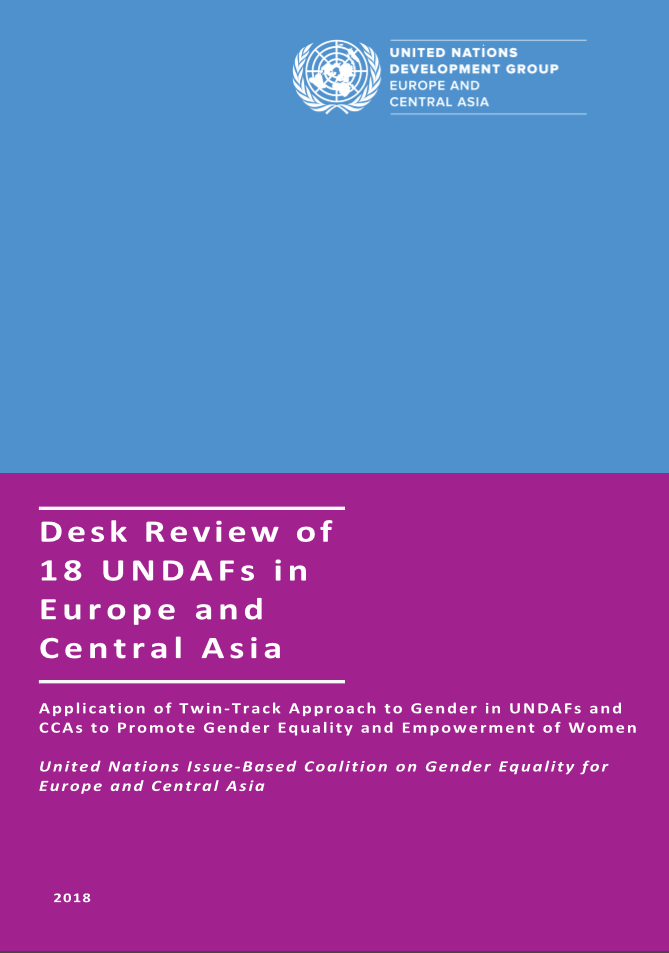
Desk Review of 18 UNDAFs in Europe and Central Asia: Application of Twin-Track Approach to Gender in UNDAFs and CCAs to promote Gender Equality and Empowerment of Women

This document was prepared with the aim to better understand how the twin-track approach of gender (i.e. gender mainstreaming and gender focus) has been applied to Common Country Analysis (CCA) and United Nations Development Assistance Framework (UNDAF) documents in Europe and Central Asia (ECA) region. By adding the analysis of the three new UNDAFs and CCAs from Kyrgyzstan, the Republic of Moldova and Ukraine (i.e. 2016 roll-outs) this time to the previous report that has covered the analysis of 2013-2015 roll-outs, now this report covers all the current UNDAFs in 18 countries/territory in the ECA region to show how these UNDAFs and CCAs are gender responsive. A comparative analysis of UNDAF roll-outs shows an increase in gender-responsiveness at both the outcome and indicator levels with each new generation. However, key findings from this analysis also show that gaps remain to promote gender equality and women’s empowerment in a systematic manner through the UNDAF planning process. As countries and territories undertake Annual Reviews of UNDAFs and new CCA exercises, the recommendations in this report can guide strengthened gender equality and women’s and girls’ empowerment programming.
This document was developed by the United Nations Europe and Central Asia Issue-Based Coalition on Gender Equality (IBC-Gender), consisting of 14 UN agencies and entities at the regional level (FAO, ILO, IOM, OHCHR, UNDP, UNECE, UN Environment, UNESCO, UNFPA, UNICEF, UNISDR, UN Women, WFP, WHO), under the overall framework of ECA Regional UN System with Regional UNDG and RCM. The document is also available at https://undg.org/document/desk-review-of-18-undafs-in-europe-and-central-asia/